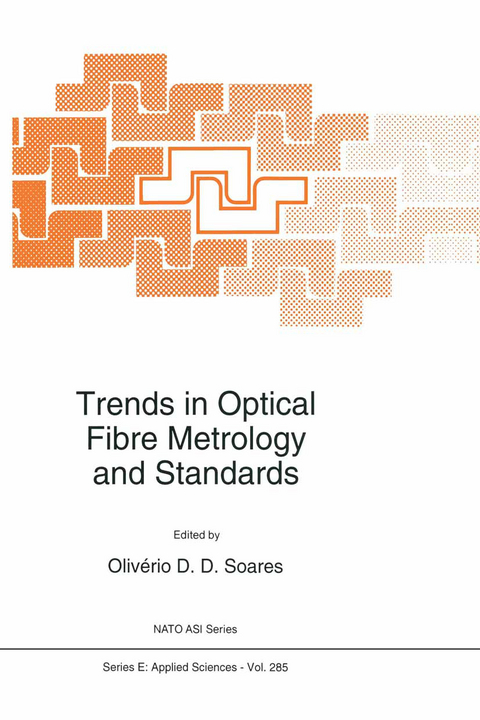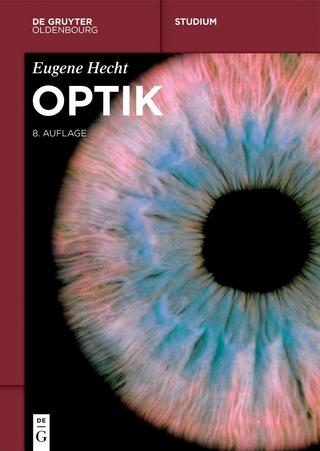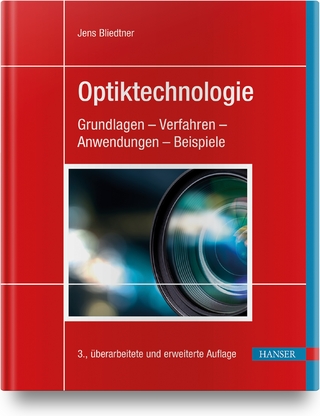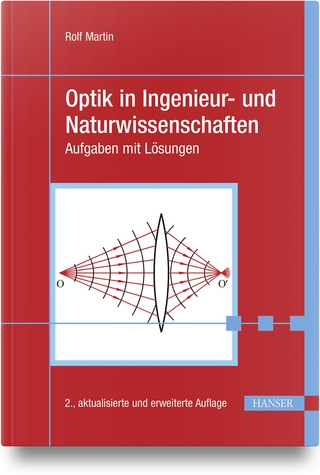
Trends in Optical Fibre Metrology and Standards
Springer (Verlag)
978-94-010-4020-4 (ISBN)
I Introduction.- 1.1 A Historical Survey of Optical Signals and Optical Fibers.- 1.2 Trends in Optical Fibre Metrology and Standards.- II Optical Fibres and Materials.- 2.1 Polarised Light Evolution in Optical Fibres.- 2.2 Nonlinear Optical Fibres.- 2.3 Exotic Fibres.- 2.4 Fibers and Fiber Lasers for the Mid-Infrared.- 2.5 Optical Fibres in Nuclear Radiation Environments.- III Optical Fibre Components.- 3.1 Connectors and Splices.- 3.2 Optical Attenuators and Couplers Characterization.- 3.3 Wavelength Division Multiplexers and the Measurement of the Channel Wavelengths.- 3.4 Active Fibre Characterisation with Passive Measurements.- IV Optical Sources.- 4.1 Wavelength Tunable Laser Diodes and their Applications.- 4.2 Active Components Characterization.- V Optical Fibre Amplifiers.- 5.1 Optical Amplifiers.- 5.2 Analysis of Erbium-Doped Silica-Fibre Characterisation Techniques.- 5.3 Optical Fibre Amplifiers Standardisation.- 5.4 Optical Amplification Modelling for Er-Doped Fibre.- VI Optical Fibre Characterisation, Calibration and Standards.- 6.1 Fibre Characterization and Measurements.- 6.2 Mechanical and Environmental Testing.- 6.3 Fibre Ribbon Measurements.- 6.4 Calibration Artefacts Traceability and Accuracy.- VII Optical Fibre Instrumentation, Measurement and Metrology.- 7.1 Photodetector Calibration.- 7.2 Power Meter Calibration.- 7.3 OTDR Calibration.- 7.4 Optical Spectrum Analyzer Calibration.- 7.5 EDFA Testing.- 7.6 Real-time Heterodyne Fibre Polarimetry by Means of Jones and Stokes Vector Detection.- 7.7 Application of Er-Doped Fiber Amplifiers to Optical Measurement Techniques.- VIII Optical Communication Systems.- 8.1 Optical Fiber Communication Technology and System Overview.- 8.2 Modern Optical Communication Systems.- 8.3 An Optical Coherent Transmission System Based on Polarization Modulation and Heterodyne Detection at 155Mbit/s Bitrate and 1.55 ?rn Wavelength.- IX Optical Sensors.- 9.1 Fiber Sensor Review.- 9.2 Fibre Optic Sensors.- 9.3 Fiber Optic Sensors for Environmental Monitoring.- X Future Trends.- 10.1 Nonlinear Optics: Theory and Applications.- 10.2 Advanced Optical Fibre Optoelectronics.- 10.3 Plastic Optical Fibres (POF).- XI Further Posters.- 11.1 Refractive Index of Planar Microlenses.- 11.2 Fibre Interferometer Set for Phase and Polarisation Measurement of Passive Fibre Elements.- 11.3 FMCW-Lidar with Tunable Twin-Guide Laser Diode.- 11.4 Fibre-Optic White-Light Interferometer Insensitive to Polarization Fading.- 11.5 QND Measurement of the Photon Number using Kerr Effect in Optical Fibres.- 11.6 Laser Transitions Characterization by Spectral and Thermal Dependences of the Transient Oscillations in the Fiber Lasers.- 11.7 Nonlinear M-Lines Spectroscopy of DMOP-PPV Polymer Planar Optical Waveguides: Quasi-Permanent and Fast Electronic Refractive Index Changes.- 11.8 Plastic Optical Fibre (POF) Displacement Sensor.- 11.9 A New Reflective Plastic Optical Fibre Displacement Transducer.- 11.10 White Light Interferometer Using Linear CCD Array with Signal Processing.- 11.11 Radiation-to-guided Field Coupling in Ti:LiNbO3Intensity Modulators.- 11.12 White Light Fiber Optic Interferometry a Technique for Monitoring Tissue Properties.- 11.13 Holographic Interferometry of Immersed Systems in Electrochemistry.- 11.14 Pressure Effects of Optical Frequency in External Cavity.- 11.15 Methods of Measurement for Angle-Polished Optical Fiber Launching Efficients.- 11.16 The Application of a Fiber Optic Gyroscope for Studies of Extinction Ratio of Fiber Optic Polarizer.- 11.17 Blocks and Architecture for a Multichannel Fibre Optic Correlator.- 11.18 Calibration of Fibre Optical Measurement Equipment at SP.- 11.19 Fibre Application in Absolute Ranging Interferometry with Computer Generated Holograms (CGH).- 11.20 Monitoring Through-the-Thickness Behaviour of Composites Using Fiber Optic Sensors.- 11.21 Fibre-Optic Fabry-Perot Sensor for Vibration and Profile Measurements.- 11.22 Application of OTDR in the Mining Industry.- 11.23 Parametric Amplification by Four-Wave Mixing for Distributed Optical Fibre Sensors.- 11.24 Intracavity Laser Diode Pumped and Modulated Er3+Doped Fiber Lasers.- 11.25 Mode-Locking of A 2.7 ?m Erbium-Doped Fluoride Fiber Laser.- Author Index.
| Reihe/Serie | NATO Science Series E ; 285 |
|---|---|
| Zusatzinfo | XXXI, 850 p. |
| Verlagsort | Dordrecht |
| Sprache | englisch |
| Maße | 160 x 240 mm |
| Themenwelt | Naturwissenschaften ► Physik / Astronomie ► Optik |
| Technik ► Elektrotechnik / Energietechnik | |
| Technik ► Maschinenbau | |
| ISBN-10 | 94-010-4020-6 / 9401040206 |
| ISBN-13 | 978-94-010-4020-4 / 9789401040204 |
| Zustand | Neuware |
| Informationen gemäß Produktsicherheitsverordnung (GPSR) | |
| Haben Sie eine Frage zum Produkt? |
aus dem Bereich


